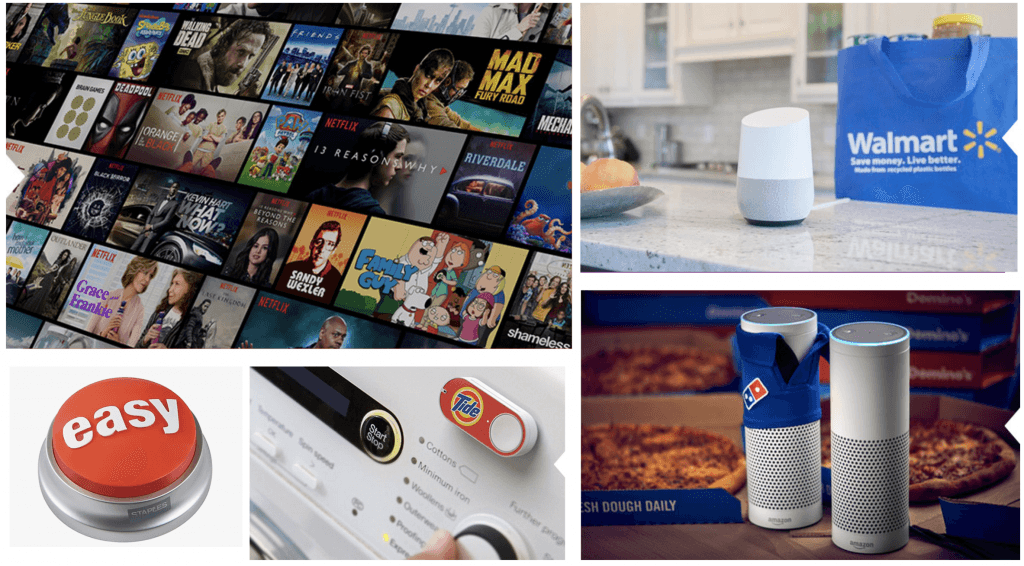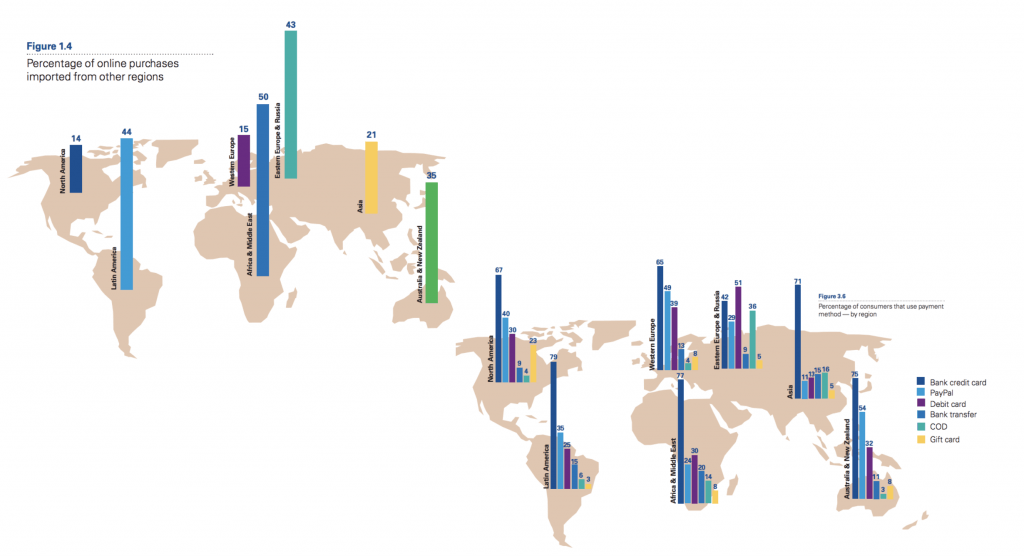E-commerce in the international arena is one of the great advantages of the Internet.
Through e-commerce, you can order products and services that cannot be obtained in Israel, or can be obtained at higher prices than in any other country, and this is a great way to get all kinds of special things.
I began the research paper for this article examining the distribution of consumption habits.
According to research I found from 2018, the distribution of consumption by millennials is:
50% prefer store shopping
27% prefer computer shopping
22% prefer mobile shopping
1% buy from catalogs
This data seems very encouraging, but does not align with other data we know about consumption habits in the Western world.
For example – in the news as early as 2017, we saw ghost malls in the US, and the store owners said that all the commerce had gone online and they didn’t pay to own the store anymore.
And here I start to practice skeptical thinking about research.
Where is this data from? What are they based on? How many people were in the sample, of what age group, in which categories would they prefer store shopping and so on.
So here is some additional data from KPMG about ecommerce penetration into the market.
The survey was conducted on 20,000 people, but more importantly – it also brings data from the trading departments of those countries.
So the most significant penetration of Ecomers, is in China and India. There 80% of shopping is done online.
Why?
How do you get such a crazy figure?
It didn’t sound like a poll, it sounded like Kim Jong Il’s support percentages.
The answer is cross border sales.
Consumers with the means in these countries prefer to buy Western brands that are perceived as higher quality and more expensive
So, buying from abroad, the very rich Chinese and Indians love gadgets and fashion, and the poor Chinese and Indians don’t buy anything like that either. So that’s your answer.
After India and China – Japan with 69 percent of transactions
Italy with 68
And South Africa with 65.
And, even according to kpmg, these data are higher than the global average – 50%
but what?
Alongside the closed malls, a new and much more interesting phenomenon is emerging…
The store’s experience,
New brands have begun to shine in the West with a new line of connection between the digital world and online shopping for the physical world.
Frank And Oak for example is a men’s clothing store. Their niche audience is young, sophisticated executives. The high-tech generation.
After purchasing a suit in an online store, the buyer receives an order for a physical store, where he will be tailored to measure and fit the suit he bought – ie repairs and multiples for a perfect fit.
Hair stylists, stylists, a comfortable and well-equipped waiting area will be able to get to know and talk to other clients, who, like him, are young, sophisticated executives in the high-tech world.
And so a clothing store has become a place where deals are closed, know colleagues, make business connections and more.
Velo Cult is another example of a slightly different category.
This is a chain of sports and bicycle stores in Canada, where you can buy many things but not bicycles.
Here, too, you can go online and shop online. Shops located in popular tourist areas and popular bicycle tours (also cheaper real estate) can be reached to get the bicycles, make improvements and additions.
Along the way there is also a restaurant bar with healthy drinks, live shows and more. The velvo cult shops have become a popular meeting place for cyclists on long walks.
So much so, that riders started to plan their itineraries between the chain’s branches to get refreshed after a long day of riding, meeting other riders and enjoying live performances.
Investors in experience stores whose purpose is to provide the experience of the shopping rather than the shopping itself.
You can reach to collect or return purchased products online, but there is a lot going on.
The ropo doesn’t care about this company because the brand gets such a significant boost from an experience store that their audience remains very loyal.
A little about the ropo
The current trend shows that 18% of searches are translated into a store within 24 hours, and today there are sophisticated ERP CRM and POS tools that help monitor this traffic as well, and get relatively accurate analytical results.
We are still talking about sales through a website. The store just completes the experience, and is a very important part of branding and positioning these companies.
Another trend – today it is very trendy to be mobile first
And we also have a lot of customers who have a very important mobile shopping experience.
The reality is still a little different.
57% – Online shoppers globally say they prefer to buy via computer or laptop.
27% have no preference, and only 17% of purchasers have actually bought something on a smartphone.
Of course, this image is different, but on e-commerce sites, the data shows that it will take some time for us to reach the moment when most purchases are in the smartphone.
Still – anyone who looks at their traffic sources sees that there is a lot of traffic in Mobile.
Why?
That ropo
Although mobile is not the preferred way to buy, many buyers still testify (more than two-thirds) that they check the prices on the web while they are in the store.
There is also a lot of traffic of research being done even before an online purchase, not just in the store… and this traffic also comes in part from Mobile.
This does not mean that the mobile can be completely neglected, because this trend will change and whoever is there first will take the market. But being there first does not provide a narrow and insane experience for the desktop – it does something completely different.
What is completely different?
There are also some interesting trends in this regard. The prominence and interest in them
AR Experience in AR
Amazon, Houzz, and IKEA offer the option to purchase in a layered reality through a dedicated app. You can see how the furniture sits in the room, move it, change its color and decide if it fits or not.
In the Houzz app you can photograph furniture or decoration and look for the item for purchase on the website or Amazon.
Kim Kardashian Screenshop App allows to identify fashion brands according to their photography and purchase them online
Benefits: Reducing Refunds, Improving Convenience
The following trend as if taken from the science fiction world:
Netflix – Artificial Intelligence is helping to improve the catalog details, and the accompanying recommendations, so today’s talk is that the next generation will be the last to market something as “generation” and start marketing really 1: 1.
Just like the neighborhood store where the seller knows everyone’s names and preferences, we know what the user’s search terms are to offer them so that the shopping experience is best for them.
Netflix, content recommendation engine. Stop dividing their customers by geographic areas and now divide them into 1300 types of flavors.
Voice Search, and Voice Customer Service. Walmart, Staples, Lift, and Dominus. Invite via Alexa.
One of the benefits of voice search is that unlike the web, where in Google search we can get hundreds of thousands of results. In voice search we get one result that the user’s attention is not able to contain too many options.
Second place is the latest new….
And that leads us to talk about the topic of organic traffic and search results.
What do our surfers look for and how do they find it?
What drives them to action?
Direct traffic represents the most significant part of e-commerce traffic (42.1%).
The electronics category leads to the use of search words
US e-commerce leads the international market with 42.9% of organic traffic, followed by the UK (6.7%), Germany (6.2%) and France (4.5%).
“Free shipping” is the most common keyword used for ads in English-speaking countries (US and UK). In Germany: Big choice “(big auswahl). In Italy: “The official site” (sito ufficiale). In Spain: “Best Price” (mejor precio).
A 50% discount is the most popular discount in the UK, Italy, France and Germany.
In Spain, a 70% discount is offered most frequently.
This study showed that e-commerce and customer behavior strategies vary widely between sectors and countries. Therefore, adapting your strategy to local markets is a key step in international positioning.
Payment methods in the Far East:
According to the graph we see that credit cards there are much stronger than any other form of payment. It is inaccurate.
The Western customer buys a lot from China and India, and mainly pays by credit card because many stores do not offer another payment option like PayPal, for example, which the Chinese seller has difficulty redeeming.
On the other hand, the Chinese buyer, Filipino, Myanmar, Indian and so on. Prefer to pay by COD (payment upon receipt of the product) or wire transfer.
The reason lies in history and technological penetration.
Countries that have always been very poor, most people do not have a bank account and prefer to cash.
In some places the existing generation still remembers the moment of the exchange of power for communist rule, and with it the nationalization of all the funds that the banks had. They have lost everything to the bank, and they have no faith in it either.
Let’s try for a moment to understand this variation between target audiences and what they prefer:
U.S-
The American buyer is looking for a balance between low price and productive ethics. More and more manufacturers are advertising who made your clothes
And buyers are flocking in that direction. Americans like a good story, they want to know who you are, why you sell these things, where you make them, and how you got it.
Then it has to balance that with the speed of delivery, in other words Amazon
Amazon controls North America for market share of
55% of Americans start their product search on Amazon, whose sales represent nearly all of eCommerce sales in the US (44%, in fact, eBay is a distant second at 7%) and nearly 4% of total US retail sales.
Another thing about Americans – we treat them as a very large market. That’s not really the case. The variance between the American from New York and the American from Dallas makes them a very large variety of target audiences, so the recommendation is to focus on a specific area and expand it.
Areas in the US are very different in terms of thinking, style and even sophistication
Brazil – The new blooming ecomers area. Showing signs of recovery after two years of economic crisis. 48 million residents are concentrated in the Southeast 60%
Lots of marketplaces have sprung up there, Brazil is wonderfully networked logistically and there are many e-commerce companies trying to get a foot in this door.
Brazilians love tempting offers and buy online with credit cards.
The Brazilian consumer who has some specific needs / wants. In Brazil, customers are unhappy with the use of Paypal and Google Wallet, as it makes them move to another page to finalize their purchase.
65% of all payments are made by credit card with monthly payments (choice for as many payments as possible). Promotions and coupons are very popular and work as a great incentive, so it’s important to make sure that your ecommerce site offers good offers.
Italy
In the north, people usually work from 9 a.m. to 6 p.m. with only an hour of lunch break. In the south, business hours are from 9am to 1pm and 4pm to 8pm. Thus, hours of online purchases vary by region.
Another feature of Italian e-commerce is cash on delivery (CoD): people prefer to pay after touching their hands. Credit cards are also used, but a password or pin request (secure 3D code) can be a reason for blocking the site. In fact, prepaid cards (e.g., Italian Postpay) are more common to play an important role in the online world.
Spain
Logistical problems. Spain has grown significantly over the past year, with a 16% increase in online shopping. The main problem in Spain is logistics. Their mail is worse than our mail – hard to believe.
According to a study by Spanish GDP, 30% of deliveries do not arrive at all. This does not include damaged, delayed packages, etc.
The Spanish solution is local online stores that do the deliveries themselves.
One of our Spanish customers sent me a picture of his branded delivery vehicle.
Shoppers are aware of the problem and therefore prefer local stores, even though they love brands.
France
The French people need some transparency about the products and their origin. Today, many online retailers use the image of “Made in France”.
With our Latin culture, we have a preference for contact and exchange. Therefore, the customer relationship is essential: Having a phone discussion is soothing and allows you to get closer to the brand. In addition, you need to address the product reputation and brand image.
Quality is one of the essential criteria in the acquisition process in France. In our market, it is becoming increasingly difficult to keep up with the price and the only option to stay ahead is to build a strong brand and stay close to customers.
In conclusion:
Whichever way we look at, the target audience has different preferences and motivations that come from local culture, technological penetration, trends and many other factors.
This lecture is too short to cover all the countries in the world, but we got a brief glimpse here of its diversity and characteristics.
We recommend that in any characterization process local market research be involved in reasonable scope and be dedicated to the product category the brand enters into.
We see that in most of the Western world, where ecomers have been around for 20 years and more, consumers are still price sensitive, but we weigh more parameters like brand story, positioning, and more.
Thank you so much for listening, and I hope you enjoyed it as much as I did.
Sources and credits:
https://home.kpmg.com/xx/en/home/insights/2017/01/online-purchase-behavior.html
https://assets.kpmg.com/content/dam/kpmg/xx/pdf/2017/01/the-truth-about-online-consumers.pdf
https://www.semrush.com/blog/international-e-commerce-experts-tips/
https://www.remarkety.com/global-ecommerce-trends-2016
https://www.export.gov/article?id=eCommerce-Channel-Options
https://www.globes.co.il/news/article.aspx?did=1000768804
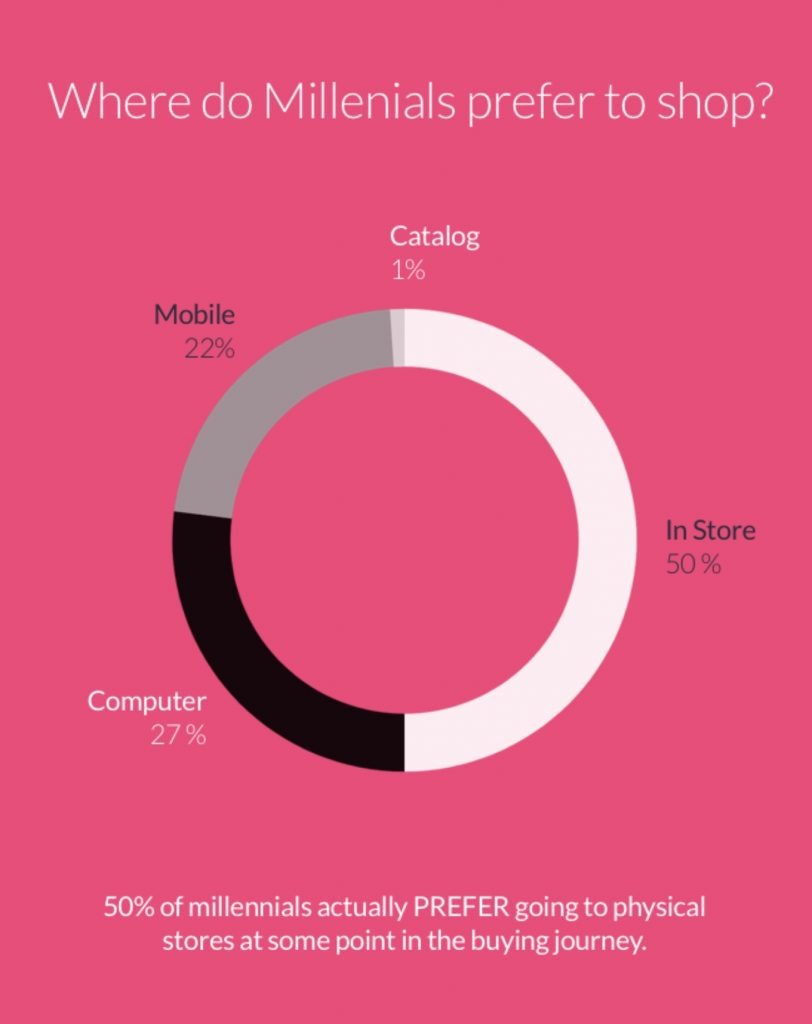 50% prefer store shopping
27% prefer computer shopping
22% prefer mobile shopping
1% buy from catalogs
This data seems very encouraging, but does not align with other data we know about consumption habits in the Western world.
For example - in the news as early as 2017, we saw ghost malls in the US, and the store owners said that all the commerce had gone online and they didn't pay to own the store anymore.
And here I start to practice skeptical thinking about research.
Where is this data from? What are they based on? How many people were in the sample, of what age group, in which categories would they prefer store shopping and so on.
So here is some additional data from KPMG about ecommerce penetration into the market.
The survey was conducted on 20,000 people, but more importantly - it also brings data from the trading departments of those countries.
50% prefer store shopping
27% prefer computer shopping
22% prefer mobile shopping
1% buy from catalogs
This data seems very encouraging, but does not align with other data we know about consumption habits in the Western world.
For example - in the news as early as 2017, we saw ghost malls in the US, and the store owners said that all the commerce had gone online and they didn't pay to own the store anymore.
And here I start to practice skeptical thinking about research.
Where is this data from? What are they based on? How many people were in the sample, of what age group, in which categories would they prefer store shopping and so on.
So here is some additional data from KPMG about ecommerce penetration into the market.
The survey was conducted on 20,000 people, but more importantly - it also brings data from the trading departments of those countries.
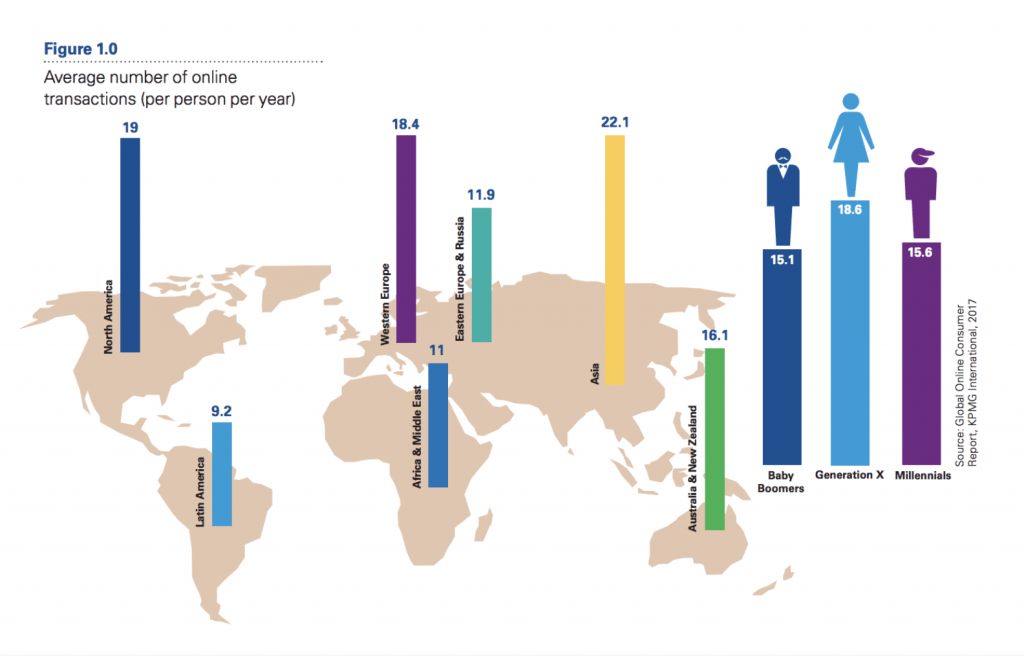 So the most significant penetration of Ecomers, is in China and India. There 80% of shopping is done online.
Why?
How do you get such a crazy figure?
It didn't sound like a poll, it sounded like Kim Jong Il's support percentages.
The answer is cross border sales.
Consumers with the means in these countries prefer to buy Western brands that are perceived as higher quality and more expensive
So, buying from abroad, the very rich Chinese and Indians love gadgets and fashion, and the poor Chinese and Indians don't buy anything like that either. So that's your answer.
After India and China - Japan with 69 percent of transactions
Italy with 68
And South Africa with 65.
And, even according to kpmg, these data are higher than the global average - 50%
but what?
Alongside the closed malls, a new and much more interesting phenomenon is emerging…
The store's experience,
New brands have begun to shine in the West with a new line of connection between the digital world and online shopping for the physical world.
Frank And Oak for example is a men's clothing store. Their niche audience is young, sophisticated executives. The high-tech generation.
After purchasing a suit in an online store, the buyer receives an order for a physical store, where he will be tailored to measure and fit the suit he bought - ie repairs and multiples for a perfect fit.
Hair stylists, stylists, a comfortable and well-equipped waiting area will be able to get to know and talk to other clients, who, like him, are young, sophisticated executives in the high-tech world.
And so a clothing store has become a place where deals are closed, know colleagues, make business connections and more.
Velo Cult is another example of a slightly different category.
This is a chain of sports and bicycle stores in Canada, where you can buy many things but not bicycles.
Here, too, you can go online and shop online. Shops located in popular tourist areas and popular bicycle tours (also cheaper real estate) can be reached to get the bicycles, make improvements and additions.
Along the way there is also a restaurant bar with healthy drinks, live shows and more. The velvo cult shops have become a popular meeting place for cyclists on long walks.
So much so, that riders started to plan their itineraries between the chain's branches to get refreshed after a long day of riding, meeting other riders and enjoying live performances.
Investors in experience stores whose purpose is to provide the experience of the shopping rather than the shopping itself.
You can reach to collect or return purchased products online, but there is a lot going on.
The ropo doesn't care about this company because the brand gets such a significant boost from an experience store that their audience remains very loyal.
A little about the ropo
The current trend shows that 18% of searches are translated into a store within 24 hours, and today there are sophisticated ERP CRM and POS tools that help monitor this traffic as well, and get relatively accurate analytical results.
We are still talking about sales through a website. The store just completes the experience, and is a very important part of branding and positioning these companies.
Another trend - today it is very trendy to be mobile first
And we also have a lot of customers who have a very important mobile shopping experience.
The reality is still a little different.
57% - Online shoppers globally say they prefer to buy via computer or laptop.
27% have no preference, and only 17% of purchasers have actually bought something on a smartphone.
Of course, this image is different, but on e-commerce sites, the data shows that it will take some time for us to reach the moment when most purchases are in the smartphone.
Still - anyone who looks at their traffic sources sees that there is a lot of traffic in Mobile.
Why?
That ropo
Although mobile is not the preferred way to buy, many buyers still testify (more than two-thirds) that they check the prices on the web while they are in the store.
There is also a lot of traffic of research being done even before an online purchase, not just in the store… and this traffic also comes in part from Mobile.
This does not mean that the mobile can be completely neglected, because this trend will change and whoever is there first will take the market. But being there first does not provide a narrow and insane experience for the desktop - it does something completely different.
What is completely different?
There are also some interesting trends in this regard. The prominence and interest in them
AR Experience in AR
So the most significant penetration of Ecomers, is in China and India. There 80% of shopping is done online.
Why?
How do you get such a crazy figure?
It didn't sound like a poll, it sounded like Kim Jong Il's support percentages.
The answer is cross border sales.
Consumers with the means in these countries prefer to buy Western brands that are perceived as higher quality and more expensive
So, buying from abroad, the very rich Chinese and Indians love gadgets and fashion, and the poor Chinese and Indians don't buy anything like that either. So that's your answer.
After India and China - Japan with 69 percent of transactions
Italy with 68
And South Africa with 65.
And, even according to kpmg, these data are higher than the global average - 50%
but what?
Alongside the closed malls, a new and much more interesting phenomenon is emerging…
The store's experience,
New brands have begun to shine in the West with a new line of connection between the digital world and online shopping for the physical world.
Frank And Oak for example is a men's clothing store. Their niche audience is young, sophisticated executives. The high-tech generation.
After purchasing a suit in an online store, the buyer receives an order for a physical store, where he will be tailored to measure and fit the suit he bought - ie repairs and multiples for a perfect fit.
Hair stylists, stylists, a comfortable and well-equipped waiting area will be able to get to know and talk to other clients, who, like him, are young, sophisticated executives in the high-tech world.
And so a clothing store has become a place where deals are closed, know colleagues, make business connections and more.
Velo Cult is another example of a slightly different category.
This is a chain of sports and bicycle stores in Canada, where you can buy many things but not bicycles.
Here, too, you can go online and shop online. Shops located in popular tourist areas and popular bicycle tours (also cheaper real estate) can be reached to get the bicycles, make improvements and additions.
Along the way there is also a restaurant bar with healthy drinks, live shows and more. The velvo cult shops have become a popular meeting place for cyclists on long walks.
So much so, that riders started to plan their itineraries between the chain's branches to get refreshed after a long day of riding, meeting other riders and enjoying live performances.
Investors in experience stores whose purpose is to provide the experience of the shopping rather than the shopping itself.
You can reach to collect or return purchased products online, but there is a lot going on.
The ropo doesn't care about this company because the brand gets such a significant boost from an experience store that their audience remains very loyal.
A little about the ropo
The current trend shows that 18% of searches are translated into a store within 24 hours, and today there are sophisticated ERP CRM and POS tools that help monitor this traffic as well, and get relatively accurate analytical results.
We are still talking about sales through a website. The store just completes the experience, and is a very important part of branding and positioning these companies.
Another trend - today it is very trendy to be mobile first
And we also have a lot of customers who have a very important mobile shopping experience.
The reality is still a little different.
57% - Online shoppers globally say they prefer to buy via computer or laptop.
27% have no preference, and only 17% of purchasers have actually bought something on a smartphone.
Of course, this image is different, but on e-commerce sites, the data shows that it will take some time for us to reach the moment when most purchases are in the smartphone.
Still - anyone who looks at their traffic sources sees that there is a lot of traffic in Mobile.
Why?
That ropo
Although mobile is not the preferred way to buy, many buyers still testify (more than two-thirds) that they check the prices on the web while they are in the store.
There is also a lot of traffic of research being done even before an online purchase, not just in the store… and this traffic also comes in part from Mobile.
This does not mean that the mobile can be completely neglected, because this trend will change and whoever is there first will take the market. But being there first does not provide a narrow and insane experience for the desktop - it does something completely different.
What is completely different?
There are also some interesting trends in this regard. The prominence and interest in them
AR Experience in AR
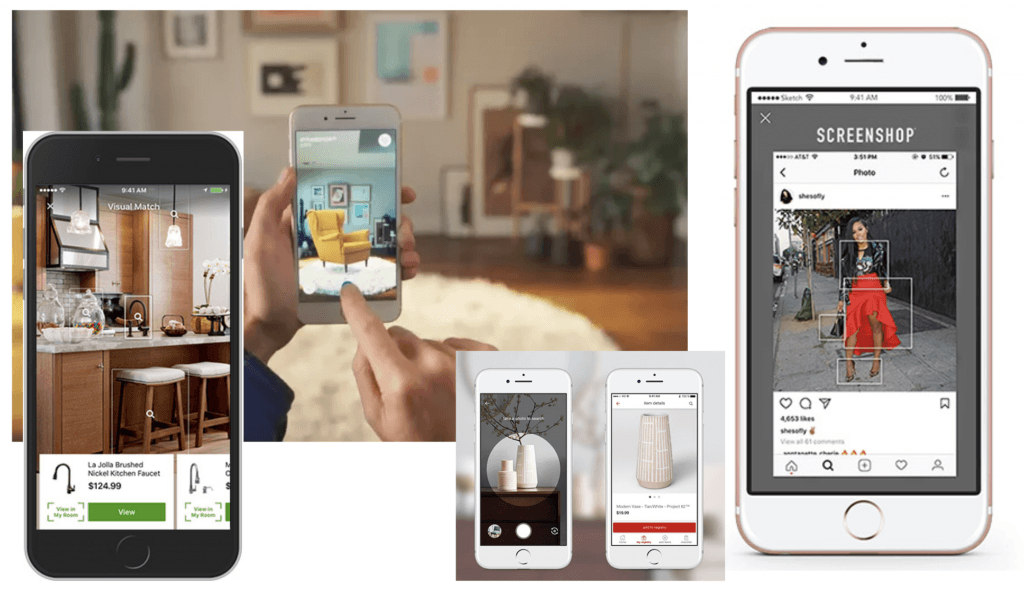 Amazon, Houzz, and IKEA offer the option to purchase in a layered reality through a dedicated app. You can see how the furniture sits in the room, move it, change its color and decide if it fits or not.
In the Houzz app you can photograph furniture or decoration and look for the item for purchase on the website or Amazon.
Kim Kardashian Screenshop App allows to identify fashion brands according to their photography and purchase them online
Benefits: Reducing Refunds, Improving Convenience
The following trend as if taken from the science fiction world:
Netflix - Artificial Intelligence is helping to improve the catalog details, and the accompanying recommendations, so today's talk is that the next generation will be the last to market something as "generation" and start marketing really 1: 1.
Just like the neighborhood store where the seller knows everyone's names and preferences, we know what the user's search terms are to offer them so that the shopping experience is best for them.
Netflix, content recommendation engine. Stop dividing their customers by geographic areas and now divide them into 1300 types of flavors.
Voice Search, and Voice Customer Service. Walmart, Staples, Lift, and Dominus. Invite via Alexa.
Amazon, Houzz, and IKEA offer the option to purchase in a layered reality through a dedicated app. You can see how the furniture sits in the room, move it, change its color and decide if it fits or not.
In the Houzz app you can photograph furniture or decoration and look for the item for purchase on the website or Amazon.
Kim Kardashian Screenshop App allows to identify fashion brands according to their photography and purchase them online
Benefits: Reducing Refunds, Improving Convenience
The following trend as if taken from the science fiction world:
Netflix - Artificial Intelligence is helping to improve the catalog details, and the accompanying recommendations, so today's talk is that the next generation will be the last to market something as "generation" and start marketing really 1: 1.
Just like the neighborhood store where the seller knows everyone's names and preferences, we know what the user's search terms are to offer them so that the shopping experience is best for them.
Netflix, content recommendation engine. Stop dividing their customers by geographic areas and now divide them into 1300 types of flavors.
Voice Search, and Voice Customer Service. Walmart, Staples, Lift, and Dominus. Invite via Alexa.
